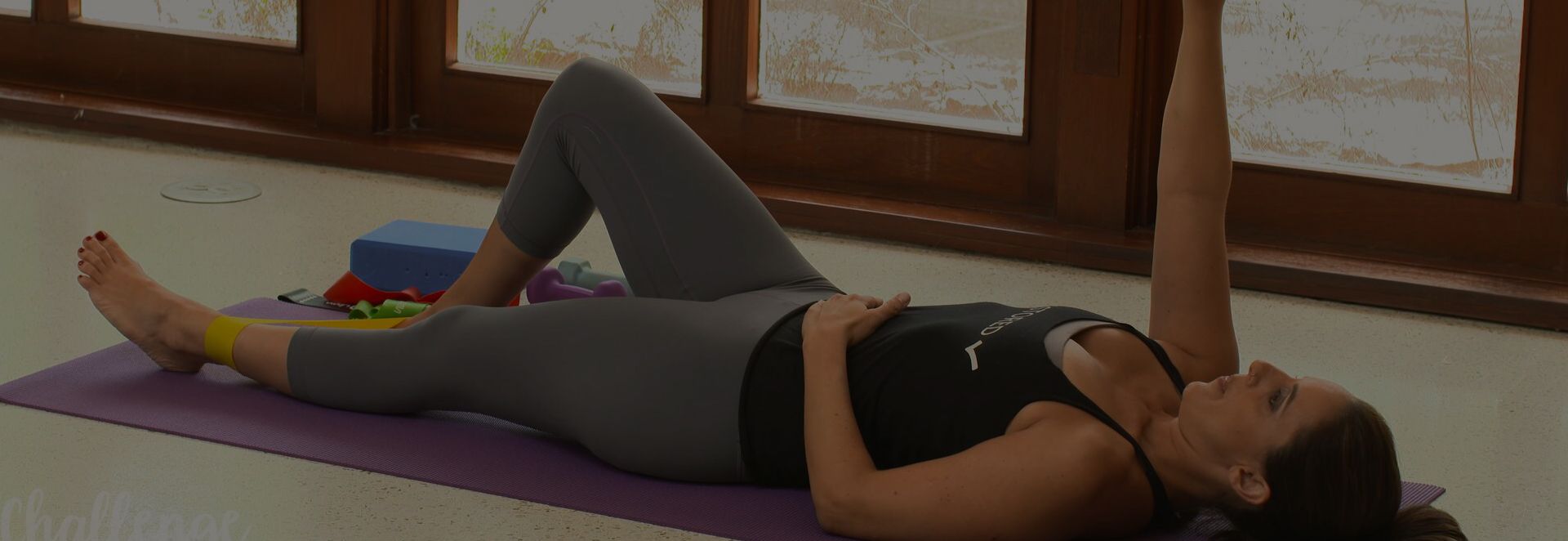Resources
- Breathing and Diastasis Recti: Understanding the Connection and Finding Relief
- Can You Have a Flat Stomach with Diastasis Recti?
- Can Diastasis Recti Be Fixed Without Surgery?
- How to Choose the Best Diastasis Recti Program?
- Working Out with Diastasis Recti
- How to Fix Diastasis Recti Years Later: A Comprehensive Guide for Long-Term Healing
- Is Diastasis Recti Preventable? | 5 Ways To Prevent Rectus Diastasis
- Can Diastasis Recti Be Fixed Without Surgery?
- Diastasis Recti During Pregnancy
- Before and After: Diastasis Recti
- Can You Fix Diastasis Recti? Exercise Or Surgery
- What Does Diastasis Recti Look Like?
- Self Testing Diastasis Recti | 4 Simple Ways to Test Yourself
- Diastasis Recti Exercises | 8 Exercises for Rectus Diastasis
- Diastasis Recti Exercises For Men
- Diastasis Recti Surgery | Procedure Overview | Will You Need It?
- Is Diastasis Recti Fixable? | Exercise or Surgery
- Diastasis Recti Symptoms | Stomach, Back Pain, Pelvic Floor Issues

in this FREE video and get the support you deserve
*No spam, just quality
content and support
Resources
- Breathing and Diastasis Recti: Understanding the Connection and Finding Relief
- Can You Have a Flat Stomach with Diastasis Recti?
- Can Diastasis Recti Be Fixed Without Surgery?
- How to Choose the Best Diastasis Recti Program?
- Working Out with Diastasis Recti
- How to Fix Diastasis Recti Years Later: A Comprehensive Guide for Long-Term Healing
- Is Diastasis Recti Preventable? | 5 Ways To Prevent Rectus Diastasis
- Can Diastasis Recti Be Fixed Without Surgery?
- Diastasis Recti During Pregnancy
- Before and After: Diastasis Recti
- Can You Fix Diastasis Recti? Exercise Or Surgery
- What Does Diastasis Recti Look Like?
- Self Testing Diastasis Recti | 4 Simple Ways to Test Yourself
- Diastasis Recti Exercises | 8 Exercises for Rectus Diastasis
- Diastasis Recti Exercises For Men
- Diastasis Recti Surgery | Procedure Overview | Will You Need It?
- Is Diastasis Recti Fixable? | Exercise or Surgery
- Diastasis Recti Symptoms | Stomach, Back Pain, Pelvic Floor Issues
Ab Exercises for Diastasis Recti That Heal, Not Harm
By Lauren Ohayon 05/27/2024
6 Min Read
If you’ve been diagnosed with diastasis recti (DR), figuring out how to keep moving without making things worse is a challenge. Thankfully, DR is very responsive to targeted exercise. When you have the knowledge you need, you’ll be able to more easily select and perform abdominal exercises that support the healing of diastasis recti without causing further harm.
Table of Contents
How Can I Recover from Diastasis Recti?
Diastasis recti is a common condition involving the separation of the rectus abdominis muscles, which we often refer to as the “six-pack.” The separation results from the thinning of the connective tissue between the two sides of the rectus abdominis muscles and is most often caused by pregnancy. However, diabetes, high body weight, intense exercise, and anatomical variations can also be contributing factors. DR can often be healed by learning core engagement strategies that better manage intra-abdominal pressure and developing a stronger, more responsive core. Less often, some people require surgery to resolve the separation, but even then, learning how to properly engage the core is essential for your long-term recovery.
Before I dive into the details, a gentle reminder: The information provided on this website is for educational and informational purposes only and is not intended as medical advice. It is not a substitute for professional medical advice, diagnosis, or treatment. Always seek the advice of your physician or other qualified health provider with any questions you may have regarding a medical condition.

Preparation for Ab Exercises
Before you begin any sort of ab exercises to correct diastasis recti, it’s important to understand the scope of your particular DR. You can self-assess to get a sense of the separation along your linea alba, or you can consult with a professional–if your doctor cannot assess you, they should be able to refer you to someone who can. The potential for exercise to heal your DR depends on several factors, including how wide and deep it is and your body’s natural ability to repair connective tissue.
Once you have had your diastasis recti assessed, you can start planning your rehab program. If you work with a PT, they may prescribe specific exercises for you to perform at home. Give yourself time to warm up and tune into your body before you start your workout–maybe a 5-minute walk or a mini dance party in your kitchen. As you move, be mindful of how you’re performing each exercise. Many ab exercises to correct diastasis recti require you to perform them correctly; if they’re performed incorrectly, they do more harm than good.
Safe Ab Exercises for Diastasis Recti
These basic exercises are essential building blocks for a strong and functional core and will help you begin training your body to move well in several different ways. A general guideline is to perform about two rounds of 8 reps of each exercise per side and modify when needed.
What to look out for: Review this video on effective core engagement to learn what not to do. Basically, you want to avoid bulging, bracing, bearing down, or holding your breath as you move–doing those things will increase intra-abdominal pressure, which is what we are trying to avoid when working to heal your DR.
Breathing & Core Engagement
Your breath is an invaluable tool for effectively and efficiently engaging your core. While deep belly breathing is commonly recommended, the key to optimal core activation is a three dimensional diaphragmatic breath that encourages movement in the ribcage. In Restore your Core®, I teach you how to use a three-dimensional breath with a technique called “candles”:
Candles Breath for Core Engagement
- Come to the beginning position of the exercise you’re about to perform
- Inhale gently through your nose and allow your ribcage to expand outward three-dimensionally
- Exhale slowly through your mouth as if you’re blowing out 99 candles on a cakeImagine that your exhale begins at your pubic bone and travels up into the ribcage; your core should gently corset in as you exhale
- Once you feel that gentle corseting of the deep core, you can begin the exercise
- Inhale as you complete the exercise
Pelvic Tilts: A gentle exercise to start activating the lower abdominals and pelvic floor
- Lie on your back with your knees bent and feet flat on the floor, pelvis-width apart
- Make sure your spine is neutral, and your ribcage is relaxed. You may wish to place a small folded towel underneath your head
- Inhale and let your ribcage expand
- Using the candles exhale, gently tilt your pelvis into a tucked position so that your pubic bone moves toward your belly button
- Your low back may flatten on the floor
- Inhale as you slowly return to the neutral spine position
- Concentrate on moving your pelvis, not pushing with your feet
Heel Slides: Low-impact movement to strengthen the core without adding pressure to the midline
- Lie on your back with your knees bent and feet flat on the floor, pelvis-width apart
- Make sure your spine is neutral and your ribcage is relaxed. You may wish to place a small folded towel underneath your head
- Inhale
- Exhale and blow out imaginary candles as you gently slide your right heel along the floor to straighten your right leg
- Inhale again, then exhale to draw the right heel back to meet the left heel. (Be mindful of your core, are you bulging, bracing, bearing down or holding your breath?)
- Repeat on each side about 8 times (you can do one side at a time or alternate sides)
- Once you’ve mastered heel slides, you can progress to reverse marching (lifting one foot away from the floor to bring your thigh perpendicular to the floor)
Side Plank
Side planks, as opposed to traditional planks, can reduce stress on the abdominal separation. I’m offering you three options to try: a bent-knee side plank with both legs bent and your upper body supported on your elbows, a staggered-foot version that allows you to use one of your legs to help lift your body away from the floor, and a full side plank with both feet stacked and your arm straight.
Bent-knee side plank
- Lie on your side with your knees bent at about a 90-degree angle and stacked on top of each other
- Place your bottom elbow directly under your shoulder, with your forearm perpendicular to your body; you can either press your palm gently into the floor or make a fist with your hand
- Inhale and let your ribcage expand, then exhale to blow out candles and lift your pelvis away from the ground
- Hold this position for 20-30 seconds, or for as long as you can maintain proper form
- Breathe steadily throughout using candles breath–this is a great opportunity to practice keeping your core slightly engaged while inhaling, without bearing down
- Slowly lower your hips back to the ground and repeat on the other side
Knee down side plank
- Lie on your side with your knees bent
- Place your bottom hand directly under your shoulder
- Extend the top leg so the foot is on the floor
- Inhale and let your ribcage expand, then exhale to blow out candles and lift your pelvis away from the ground
- Hold this position for 20-30 seconds, or for as long as you can maintain proper form
- Breathe steadily throughout using candles breath
- Slowly lower your hips to the ground and repeat on the other side
For a full side plank, set up as for the staggered-leg side plank, but stack both feet on top of each other. You can perform this with your elbow on the floor or using a straight arm.
Tired of side plank? Here are some variations on a traditional plank to help you slowly work your way up to it.
Advanced Exercises and Progress Monitoring
As you get stronger, you may introduce more traditional ab exercises or increase the difficulty of the exercises above. Keeping a log of your progress and symptoms can help you ensure that the exercises you’re doing remain beneficial and not detrimental. When you add new exercises, make sure you’re carefully monitoring your form for excessive coning, doming, and bulging–those can be signs that you’re not ready for that amount of load. Checking in with a PT or movement teacher trained in core rehab can also be a great step at this point in your recovery–they will be able to assess your form and help you get the most out of the exercises; technique matters!
The Best Exercises for Diastasis Recti…
…are the exercises you actually do. Choosing safe, effective exercises is one thing, but committing to taking time to care for yourself and your body is essential.
Remember that healing DR is a journey, and not always a linear process. Be patient with your body, and listen to what it has to say. Do seek outside opinions and help if you have questions or feel like something just isn’t right. If you want a comprehensive, at-home program that will help your whole body get back to feeling strong and functional, check out my Restore Your Core® program.
FAQ section
1. Are all ab exercises safe for those with diastasis recti?
No, not all ab exercises are safe for those with diastasis recti; exercises that increase intra-abdominal pressure, such as crunches and sit-ups, should be avoided.
2. How often should I perform ab exercises for diastasis recti?
Between 3-5 times a week is sufficient–your body needs time to rest, too. Adding walking to your regular exercise routine can be a great supplement to exercises targeting DR healing.
3. What are the signs of doing an ab exercise incorrectly for diastasis recti?
Signs of doing an ab exercise incorrectly include bulging or doming of the belly, lower back pain, and inability to maintain the proper form for the exercise.
4. Can diastasis recti be healed with ab exercises?
Yes, with consistent and appropriate exercises, diastasis recti can be significantly improved or healed. I recommend taking up to a year to see progress with exercise; if you’re still not seeing significant gains in core function at that point, you may wish to consult a medical professional for other options.
5. Are there any ab exercises I should absolutely avoid with diastasis recti?
In general, when you’re first beginning to heal DR, you should avoid any moves that cause the abdomen to bulge or create excessive pressure, such as traditional sit-ups, crunches, v-ups, planks, etc. However, as you heal it is important to gradually begin to load the rectus abdominis muscles, and modifications of these exercises may be incorporated into your routine. Consult with a PT or movement specialist to learn how to perform these types of exercises safely.
6. What other factors besides exercise can help heal diastasis recti?
Aside from ab exercises, effective breathing techniques such as a three-dimensional rib breath, improving your alignment, and increasing your overall strength and mobility can help heal DR. Staying hydrated and avoiding constipation will help keep intra-abdominal pressure to a minimum.
 Registration closing for
Registration closing for 


